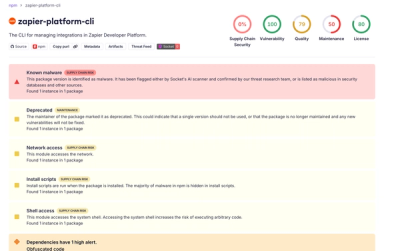
Install
$ npm install @githubprimer/octicons-react --save
Usage
<Octicon>
The <Octicon> component is really just the "shell" of an Octicon that renders
the <svg> element and all of its attributes. To render a specific icon, you
must pass it either via the icon prop, or as the only child:
<Octicon icon={Icon} />
<Octicon><Icon x={10}/></Octicon>
Note that none of our builtin icons take props, so unless you're creating
custom icons you'll probably want to use the icon prop form.
Icons
The @githubprimer/octicons-react module exports the Octicon component as
default and the individual icon symbols as separate named
exports. This
allows you to import only the icons that you need without blowing up your
bundle:
import React from 'react'
import Octicon, {Beaker, Zap} from '@githubprimer/octicons-react'
export default function Icon({boom}) {
return <Octicon icon={boom ? Zap : Beaker}/>
}
If you were to compile this example with a tool that supports tree-shaking
(such as Webpack, Rollup, or Parcel) the resulting bundle would only include
the "zap" and "beaker" icons.
All icons
If you don't mind your bundle being huge or you need to be able to render
arbitrarily named icons at runtime, you can import either of the following
named exports:
getIconByName()
The getIconByName export is a function that takes a lowercase octicon name
(such as arrow-right) and returns the corresponding icon class. Using this
helper, it's possible to create an Octicon class that takes a name prop and
resolves it to the right component:
import React from 'react'
import Octicon, {getIconByName} from '@githubprimer/octicons-react'
export default function OcticonByName({name, ...props}) {
return <Octicon {...props} icon={getIconByName(name)} />
}
iconsByName
The iconsByName export is an object that maps keys (such as arrow-right or
zap) to component functions, which you can use to generate listings of all
the octicons:
import React from 'react'
import Octicon, {iconsByName} from '@githubprimer/octicons-react'
export default function OcticonsList() {
return (
<ul>
{Object.keys(iconsByName).map(key => (
<li key={key}>
<tt>{key}</tt>
<Octicon icon={iconsByName[key]}/>
</li>
))}
</ul>
)
}
Vertical alignment
By default the octicons have vertical-align: text-bottom; applied as inline
styles. You can change the alignment via the verticalAlign prop, which can be
either middle, text-bottom, text-top, or top.
import Octicon, {Repo} from '@githubprimer/octicons-react'
export default () => (
<h1>
<Octicon icon={Repo} size='large' verticalAlign='middle' /> github/github
</h1>
)
ariaLabel
You have the option of adding accessibility information to the icon with the
aria-label attribute via the ariaLabel prop (note the
capitalization of L!).
import Octicon, {Plus} from '@githubprimer/octicons-react'
export default () => (
<button>
<Octicon icon={Plus} ariaLabel="Add new item" /> New
</button>
)
Sizes
The size prop takes small, medium, and large values that can be used to
render octicons at standard sizes:
size='small' | 16px height by computed width |
size='medium' | 32px height by computed width |
size='large' | 64px height by computed width |
import Octicon, {LogoGithub} from '@githubprimer/octicons-react'
export default () => (
<h1>
<a href='https://github.com'>
<Octicon icon={LogoGithub} size='large' ariaLabel='GitHub'/>
</a>
</h1>
)
Custom icons
Each of our icon components is really just a function that renders its SVG
<path>. To accommodate icons varying aspect ratios, the Octicon component
determines the viewBox of the <svg> element by first looking for a size
array on the icon component class. For instance, if you wanted to create a
custom icon that consisted of three circles side by side, you could do this:
import React from 'react'
import Octicon from '@githubprimer/octicons-react'
function CirclesIcon() {
return (
<React.Fragment>
<circle r={5} cx={5} cy={5}/>
<circle r={5} cx={15} cy={5}/>
<circle r={5} cx={25} cy={5}/>
</React.Fragment>
)
}
CirclesIcon.size = [30, 10]
export default CirclesOcticon(props) {
return <Octicon {...props} icon={CirclesIcon} />
}
License
(c) GitHub, Inc.
When using the GitHub logos, be sure to follow the GitHub logo
guidelines.
MIT



